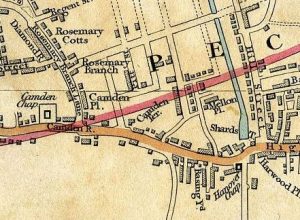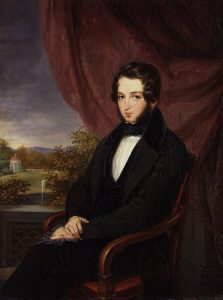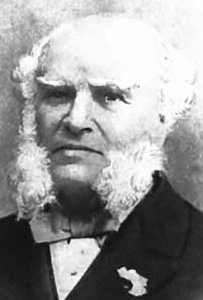The Rothschilds came to Peckham:
a surprising history is uncovered
For centuries, across the world, people of the Jewish faith have endured discrimination: victims of deeply ingrained, irrational prejudice and hatred; their lives punctuated by riots, accusations of infanticide, banishments and massacres – not least, in our own time, the Nazi Holocaust.
Sadly, our pleasant land has not been free of such oppression. Cannon [1] tells us that Jewish immigration to Britain, on any scale, came only after the Norman Conquest. Because Christians were not allowed to practise usury, Jews quickly established themselves as financiers and money-lenders. Nevertheless, they were ruthlessly exploited by monarchs and maligned by the native population. During the crusades, there were attacks on Jews in London, and in 1190 some 150 Jews were slaughtered in York, many committing suicide. As their number increased, Jews were commonly confined to ghettoes, and from 1218 “were obliged to wear badges, steadily increased in size”. Persecution continued during the rest of the 13th century: in 1278 hundreds of Jews were hanged, followed by an edict for their wholesale expulsion from the kingdom. This ban persisted until the Commonwealth when, to his credit, Oliver Cromwell ignored the measure and began to allow Jews back. Yet hatred persisted. Most Jews were denied naturalization, and even after Catholic emancipation in 1829, they were left as the only religious group still experiencing severe restrictions.
By this time, however, a gradual easement in favour of some prominent individuals had taken place. One such was Nathan Mayer Rothschild (1777-1836). His father, Mayer Amschel Rothschild, originally a coin dealer and money lender, had risen to become one of Europe’s most powerful bankers in the German principality of Hesse-Kassel. In 1798, in pursuit of expansion, he despatched his sons to establish banking services in various European cities. Nathan came to Manchester, where he began trading as a textile and general merchant, before moving to London. Here he developed a lucrative business as a banker and financier, founding a bank in his name that was to become part of the then largest banking empire in the world. He amassed a fortune in the government bonds market, financing subsidies that the British government passed on to its allies during the Napoleonic wars.
All this is relatively well known, but we suspect that many of our readers will be surprised to learn that it is also on record that this wealthy magnate insisted that his sons Anthony and Lionel be educated at a boarding school in Peckham. Yet this is a fact entirely in keeping with descriptions of the area at this period. The London and Counties Directory 1823-1824 refers to Peckham as “a very populous village…celebrated for a great number of boarding schools, chiefly for young ladies, owing to the salubrity of the air, and water, for drinking, considered to be more pure than any in the neighbourhood of the Metropolis”. Similarly, Pigot and Co’s National and Provincial Commercial Directory of 1837 describes Peckham as “a populous hamlet…containing, with its immediate vicinage, many spacious and handsome houses and tasteful detached villas. The village consists of one principal street, which is well lighted with gas, and inhabited by very respectable persons; and a branch of the Surrey canal approaches within a short distance of it. Peckham is remarkable for the great number of boarding schools for youth of both sexes established in it.”
Two of these schools catered for Jewish children from affluent families: one for boys, the other for girls. Typically they offered both Jewish and secular subjects, often including modern languages, especially German. Little more is known about the girls’ academy, save that it was located in Deptford Lane (now Queen’s Road) and was run by one Hannah Gomes (1791-1847) until some time in the 1840s. Southwark rate books for 1831 show Hannah living at Union Row, Peckham, and genealogical records indicate that her father Isaac Suares Gomes ran an academy at Bury Street in the City of London.
 The boys’ academy, run until 1826 by Abraham Garcia (1790-1826), and subsequently by his sister, is better documented. The JewishGen website [2] mentions it as being “of a more select type”, while Palgrave [3] has a short article, giving its location and naming some of its pupils who were to become well-known in their own right. Garcia himself is identified as a former book keeper from the City firm of Barrow and Lousada who in 1815 opened the school “at the instigation of wealthy Sephardim dissatisfied with the boarding school at Highgate run by Hyman Hurwitz, whose strict regime and teaching methods probably struck them as overly reminiscent of Polish chedarim.” It was located at Camden Place, on land now occupied by a modern council estate. At least one 19th century map shows the address as being on the Peckham side of what is now Southampton Way, close to the junction with Peckham Road. [4]
The boys’ academy, run until 1826 by Abraham Garcia (1790-1826), and subsequently by his sister, is better documented. The JewishGen website [2] mentions it as being “of a more select type”, while Palgrave [3] has a short article, giving its location and naming some of its pupils who were to become well-known in their own right. Garcia himself is identified as a former book keeper from the City firm of Barrow and Lousada who in 1815 opened the school “at the instigation of wealthy Sephardim dissatisfied with the boarding school at Highgate run by Hyman Hurwitz, whose strict regime and teaching methods probably struck them as overly reminiscent of Polish chedarim.” It was located at Camden Place, on land now occupied by a modern council estate. At least one 19th century map shows the address as being on the Peckham side of what is now Southampton Way, close to the junction with Peckham Road. [4]
And so on to the illustrious pupils of an academy that was to become “the aristocratic Jewish school of the day”. Foremost were Anthony and Lionel Nathan de Rothschild. Anthony (1810-1876) is remembered as a successful merchant banker and community leader; a friend of Arnold, Thackeray, Disraeli and Gladstone, financial adviser to the Prince of Wales (later King Edward VII), and created a baron (of Tring Park) in 1847. He worked for the family bank of N. M. Rothschild, becoming a partner on his father’s death in 1836.

Lionel Nathan de Rothschild by Moritz Daniel Oppenheim
Lionel (1808-1879), the eldest son, declined a baronetcy, but pursued a similarly gilded path as a merchant banker, succeeding his father in 1836. Like his father he specialised in loans to governments, notably for the Crimean War and for the government’s purchase of a controlling interest in the Suez Canal. He also pursued a political path, being returned to Parliament as Liberal MP for the City of London in 1847, and re-elected in 1849, 1852 and 1857, but famously denied his seat because as a Jew he could not swear the oath on his faith as a Christian, a requirement that persisted until the law was changed in 1858. He then became the first professing Jew to take his seat in the Commons, an event seen by historians as the culmination of Jewish emancipation in Britain.
Friends of the Rothschild boys at Garcia’s Academy were David and Jacob Quixano Henriques, children of Sephardic families who had settled in Jamaica in the 17th century. David (1804-1870), moving to London, would form a partnership with Jacob (1811-1898), trading as Henriques Brothers, and was also director of the City Bank and the Bank of Australasia. The latter brother moved between England and Jamaica, but was for some time a director of the Colonial Bank and the Chartered Bank of Australia, which he subsequently chaired.

Joseph Barrow Montefiore
Joseph Barrow Montefiore (1803-1893), whose life is particularly well documented, pursued a more adventurous course. Born in London, he was articled to a firm of London tea brokers, and in 1826 came to be accepted as one of twelve Jewish brokers in the City of London, before emigrating to Australia. He arrived in Sydney in February 1829 with his wife Rebecca (née Mocatta), established a trading firm, and made (and eventually lost) a large fortune through the acquisition of land. He was in this period also influential in advancing Sephardic worship, founding and presiding over Sydney’s Kehilla congregation. Made bankrupt after one of Australia’s economic depressions, he returned to London c.1841, but with the help of friends, including possibly the Rothschilds, was able to go back to Australia in 1846, setting up as an importer/shipping agent and investing heavily in copper mining, before finally settling back in London in 1860. An Australian biography [5] describes him thus: “Enterprising, urbane, and noted for his wit and prodigious memory, he was perhaps the outstanding representative in the Australian colonies of the richly endowed Sephardi merchants, financiers and scholars of London, the vanguard of Jewish expansion into a new world and of the Jewish emancipation movement in the old.”
Finally we come to the Mocattas, one of the leading Anglo-Jewish families, particularly noted for philanthropy and support for the arts, part of what came to be known as a “cousinhood” of aristocratic Sephardic families. Two Mocattas studied at Garcia’s Academy – John, about whom little is known, and Abraham (1797-1880) who prospered as a bullion dealer and stockbroker.
But that is not the end of the story. For a number of Garcia’s pupils the association forged in Peckham was revived through the Jewish reform movement. Abraham Mocatta and Joseph Barrow Montefiore were two of three founding wardens of the West London (Reform) Synagogue of British Jews, while the Henriques brothers were both actively involved in the movement that led to its formation and were signatories to the 1840 declaration which underpinned the foundation of its congregation. David for some years served as its treasurer. Montefiore, on his return from Australia, was active for many years as one of the stalwarts of the synagogue.
This, briefly, is a story much of which is little known outside Jewish circles. It is a testament to the industry and dedication of some of the most eminent pillars of Jewish society, and a reminder, when immigration into Britain is being called into question, of the richness that it can bring: benefits that have enhanced our public life, and for which the more humble Abraham Garcia of Peckham can take a small slice of credit.
Christine Camplin and Derek Kinrade
[1] John Cannon, The Oxford Companion to British History (1997)
[2] Edmond Safra, JewishGen (www.jewishgen.org) , drawing on The History of the Great Synagogue (part of the Susser Archive, Ch.XV)
[3] W.D.Rubinstein, M Jolles and H.L.Rubinstein (eds.), The Palgrave Dictionary of Anglo-Jewish History, drawing on various sources
[4] The Academy must have closed before 1841. No trace of it can be found in the 1841 census. One possibility is that Robert Sugden took over the premises. The 1831 rate books show “Camden Place – house and school”, and Blanch’s Ye Parish of Camerwell suggests Sugden House School was founded in 1828. It is listed in Camden Place in the 1832 Post Office Directory.
[5] Israel Getzler, Australian Dictionary of Biography, vol.2 (1967) on adb.anu.edu.au/biography/montefiore-joseph-barrow-2472
Reprinted from Peckham Society News, Issue 137 (Summer 2014)


